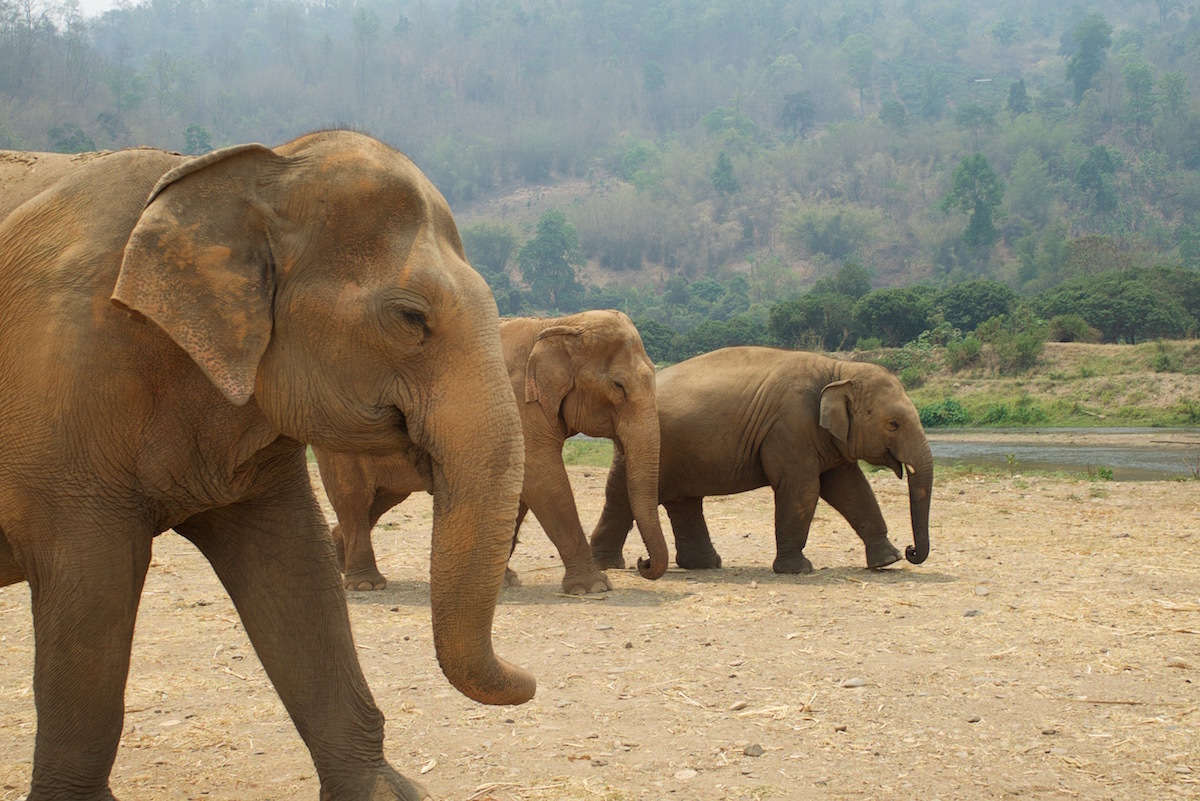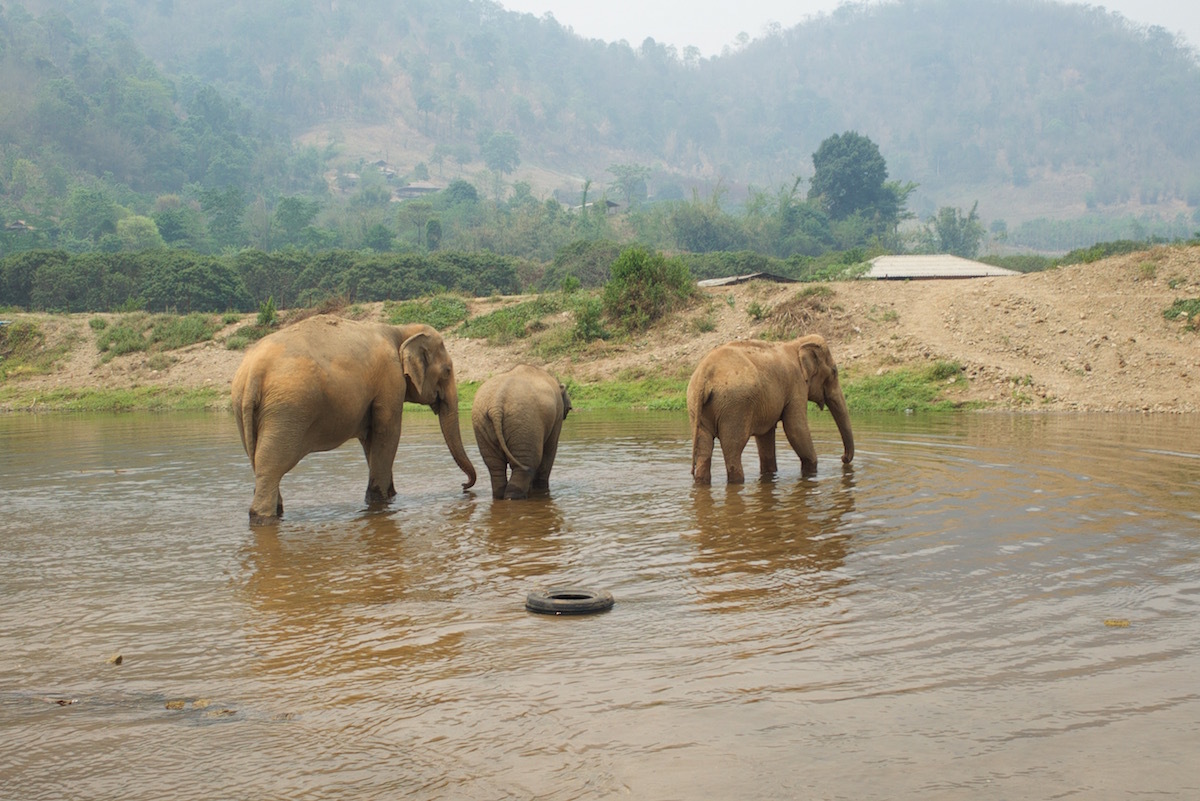As the founder of Elephant Nature Park strides into her center, 20 rumpled rescue dogs immediately begin to howl. She shakes her head, amused. After 20 years caring for animals at her sanctuary, Sangduen “Lek” Chailert is used to creatures of all shapes and sizes vying for her attention. But a pack of dogs snapping at one another is nothing when 70 elephants will thunder across the grounds at the sound of your voice.
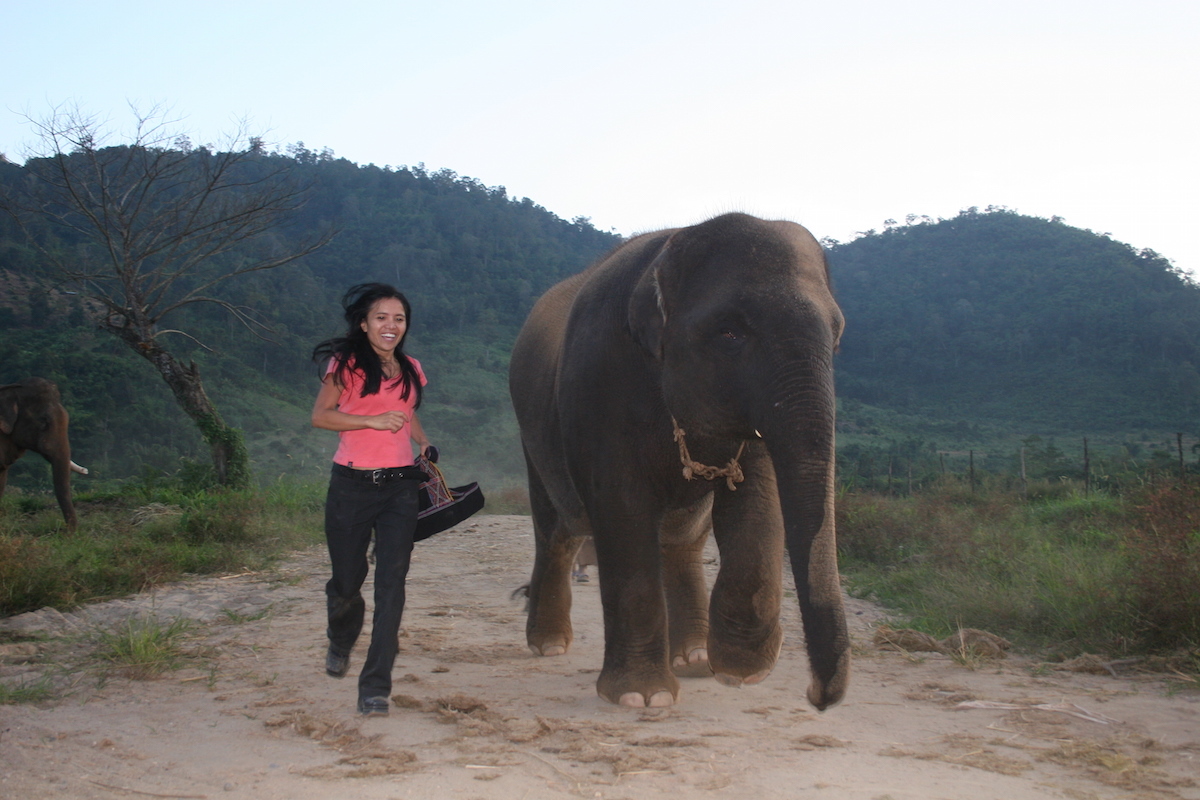
Photo courtesy of Elephant Nature Park
“Normally if I go in the field I will call and all the elephants will come and hug me,” she says, clad in a T-shirt with “The Devil Wears Ivory” scrawled across it. Henrik Enevoldsen, a long-term supporter of Elephant Nature Park, describes with wonder the affection she arouses in them. “When she talks with elephants they will not let her go. They want her company all the time,” he says. “Many times when we come, we cannot go in the field with [Lek] because all the elephants will come to her.”
Videos by VICE
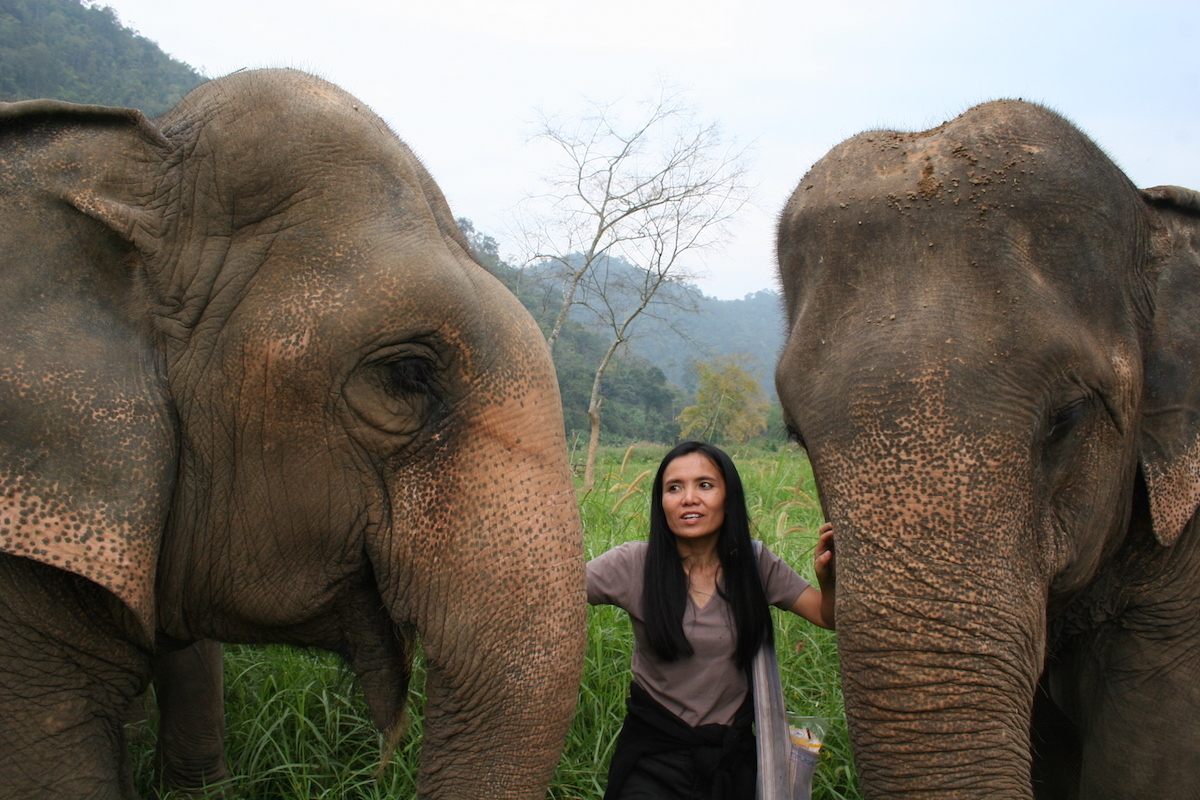
Photo courtesy of Elephant Nature Park
For the last twenty years, this diminutively-sized woman has given voice to Asia’s largest species. As founder of the Elephant Nature Park—a sanctuary established in 1996 across 250 sprawling acres of parkland in Northern Thailand—she has educated both the local population and Thailand’s booming tourist scene on the plight of the Asian Elephant. The mission of her park is simple: provide refuge for distressed elephants that have suffered at the hands of humans. That means no bullhooks (a steel tool traditionally used to dominate elephants), no chains, no trekking saddles, and ample space to roam at will. Her elephants, most of whom are in their twilight years, are allowed dignity at last.
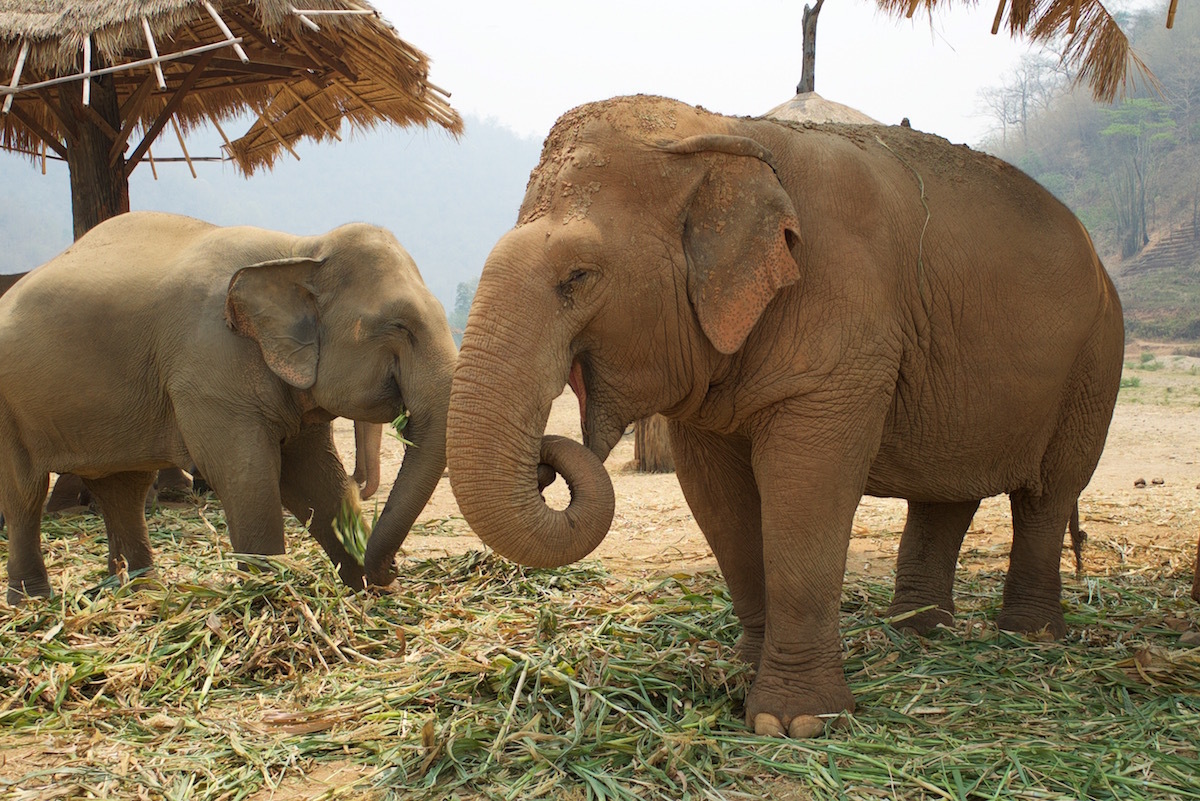
Photos by Pip Usher
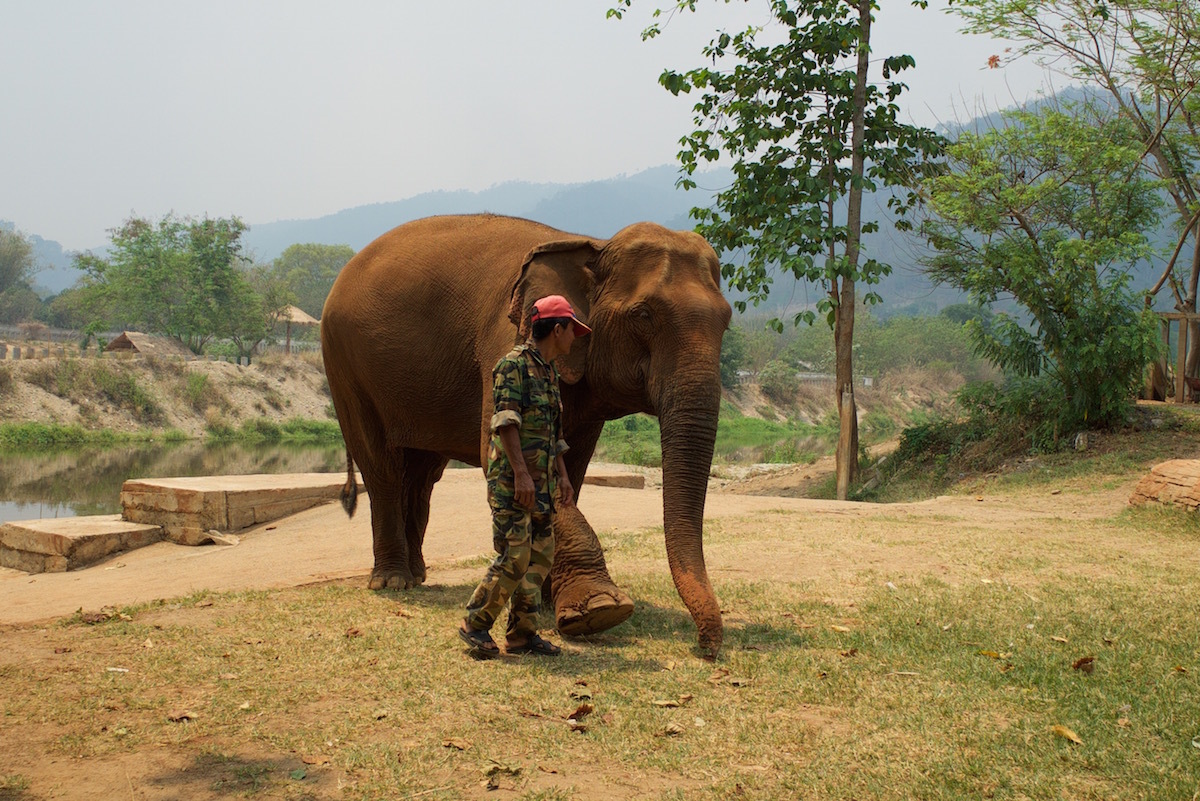
Much like the crowd that visits Elephant Nature Park clutching their iPhones, Lek has always been fascinated by these “beautiful giants.” Raised in a hill tribe in Northern Thailand, she first witnessed their suffering as a teenager, when she accompanied a group of missionaries on a visit into the jungle to observe elephants in the logging industry.
“I saw a bull elephant badly pushed to work [who had] an injury,” Lek recalls. “He started screaming. I asked the owner when this elephant will have time to rest and they said they have no room for that. When they die, they stop working.”
She passes a hand across her face, still haunted by the memory. Her voice grows anguished. “I saw the elephant was angry and upset when they beat him to go to work,” she says. “He was screaming; it was unbelievable. That is deep in my mind. I can’t forget that.”
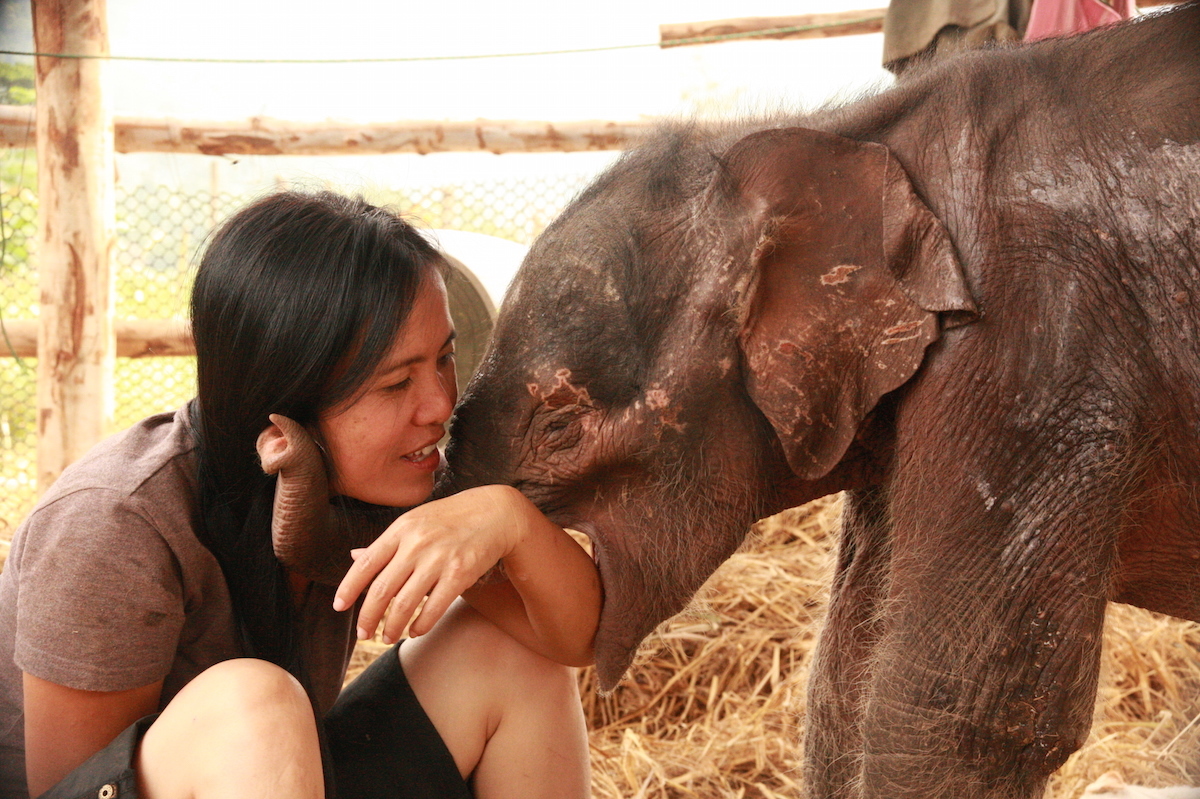
Photos courtesy of Elephant Nature Park
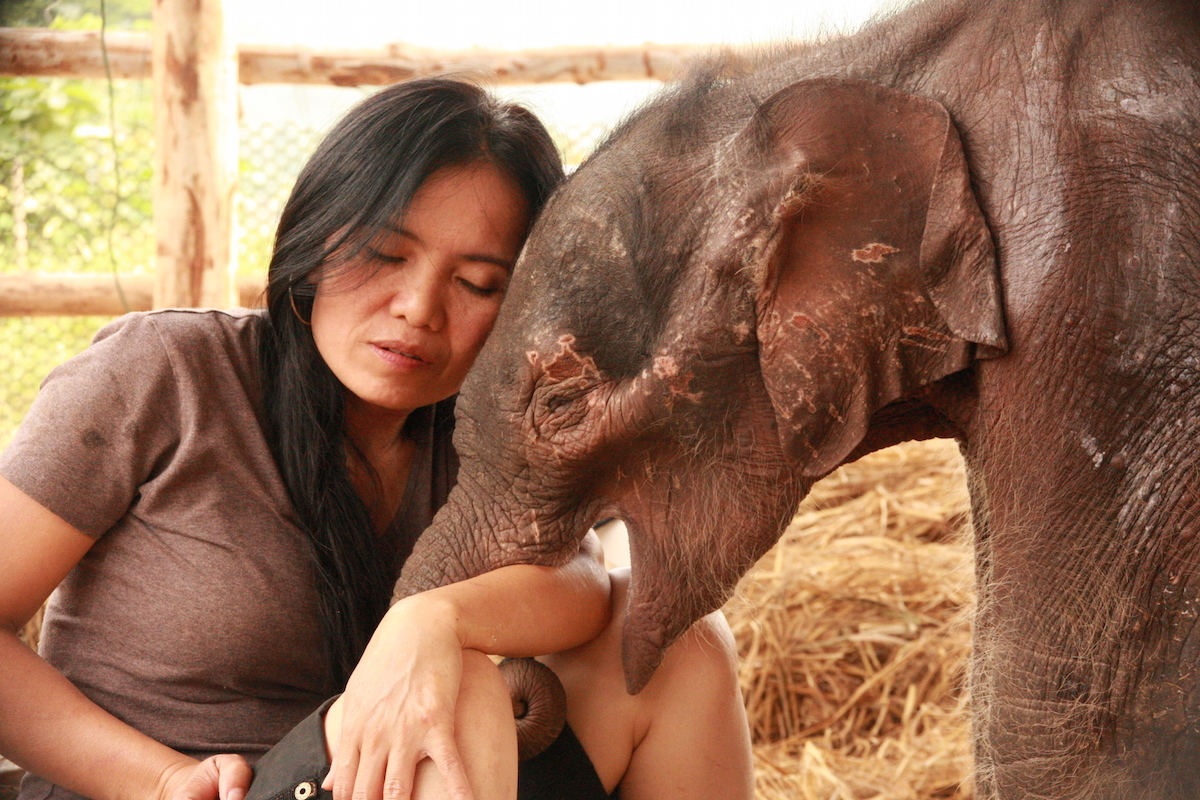
In a country where more than half of the elephant population are held in captivity, this wasn’t an unfortunate one-off. Logging camps—made illegal in 1989 by the Thai government, although with some still in unlawful operation today—force elephants to bulldoze felled trees out of the jungle’s dense growth. Subjected to brutal beatings, often starved and maimed by live land mines along the Thai-Burma border, these elephants suffer daily physical and psychological torture. The closure of the logging camps didn’t end their suffering; instead, it presented a new form of misery. Their owners—burdened with the cost of providing 400-600 pounds of food per day for their charge—were forced to seek alternative means of employment. Soon, elephants were performing elaborate tricks, offering rides to tourists on their backs or being led through Bangkok, begging for money.
Raised on a diet of Dumbo and circus shows, most tourists are oblivious to the harm their dollar does. It’s hard not to feel delighted at the sight of an elephant painting a watercolor with its trunk—but these tricks are the result of years of torture. All domesticated elephants are subjected to a savage ritual called phajaan, or “crushing,” that has existed in Asia for centuries.
Separated from their mothers while they are still calves—a process that often involves killing 4-5 members of the herd in the process—baby elephants are then tied into wooden cages. Over the next week, they are repeatedly stabbed with bullhooks, beaten with metal, starved, sleep-deprived, burned, and bound by ropes that pull their limbs apart. Eventually, teetering close to death, their spirit is broken. It is then that the mahout (person who works with elephants) will bring the animal its first meal—and so begins a relationship between man and animal steeped in physical abuse and mental domination. Now and again, elephants snap—as demonstrated by the recent case of the British tourist trampled to death by an elephant at a trekking camp.
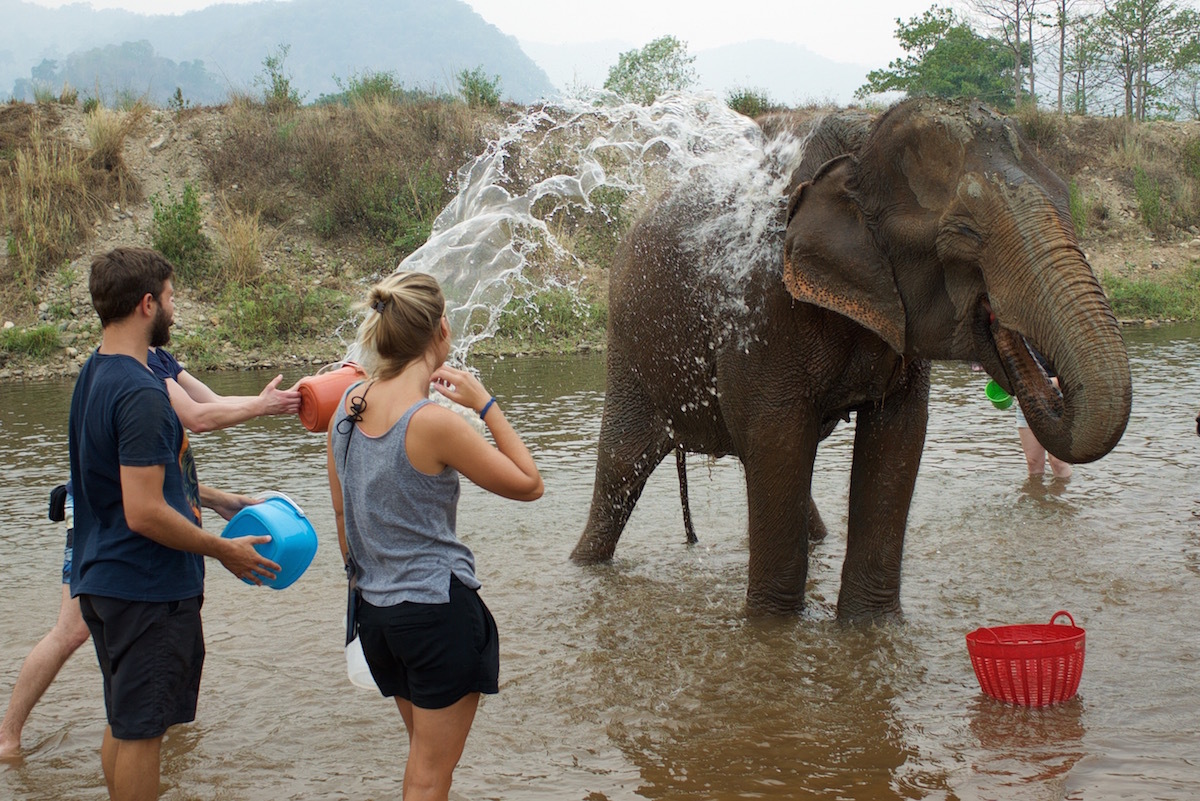
Photos by Pip Usher
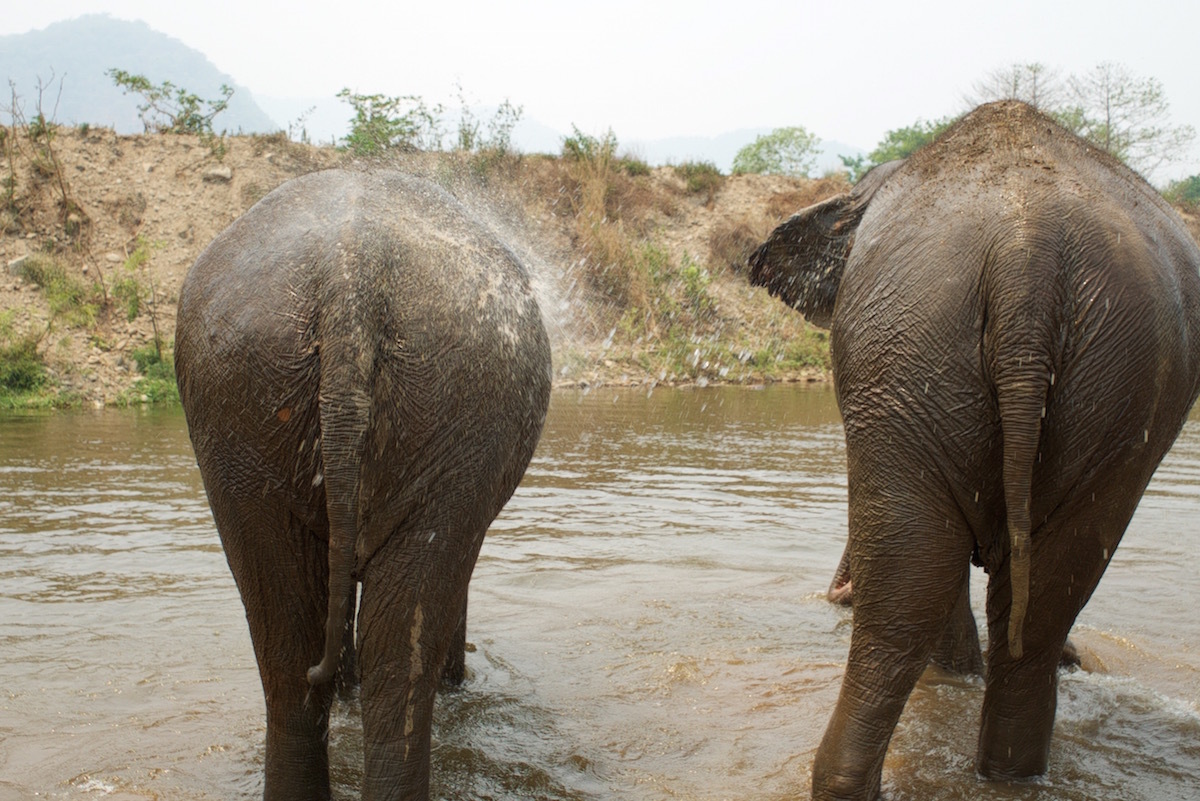
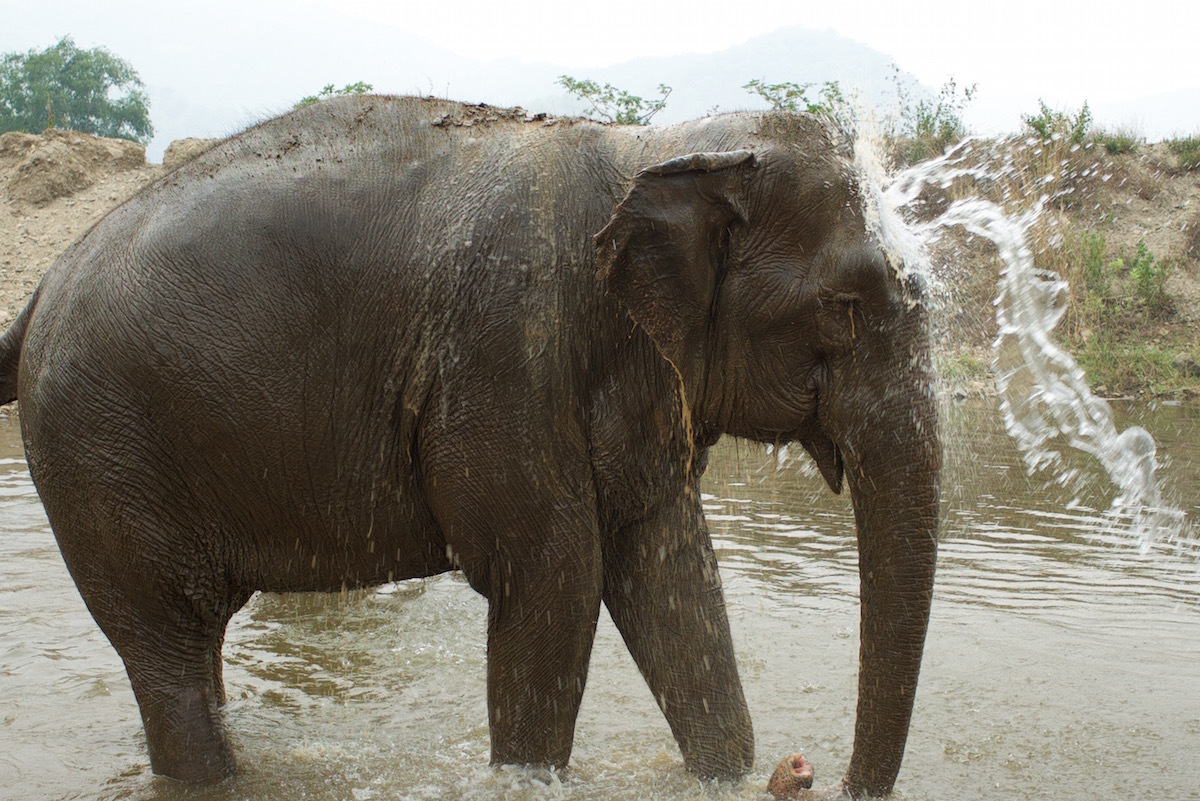
By the time the elephants reach Elephant Nature Park, most are in pieces. “Eighty-five percent arrive with mental problems,” says Lek. “Some of them stare like a zombie. They are traumatized from their work. Handicapped, injured, blind, lame—but the worst part is the mental [anguish]. Many of them stand still; many spin around by themselves. Many scream and run away when they see other elephants. Their mind is completely gone.”
Kabu, a lumbering giant who patiently humors the crowd of tourists eager to feed her watermelons, is one such case. Rescued from Thailand’s logging industry, one leg is completely useless. Worse still, in the eight months since her arrival at the sanctuary, she has failed to make any friends. She may never manage to integrate into a herd.
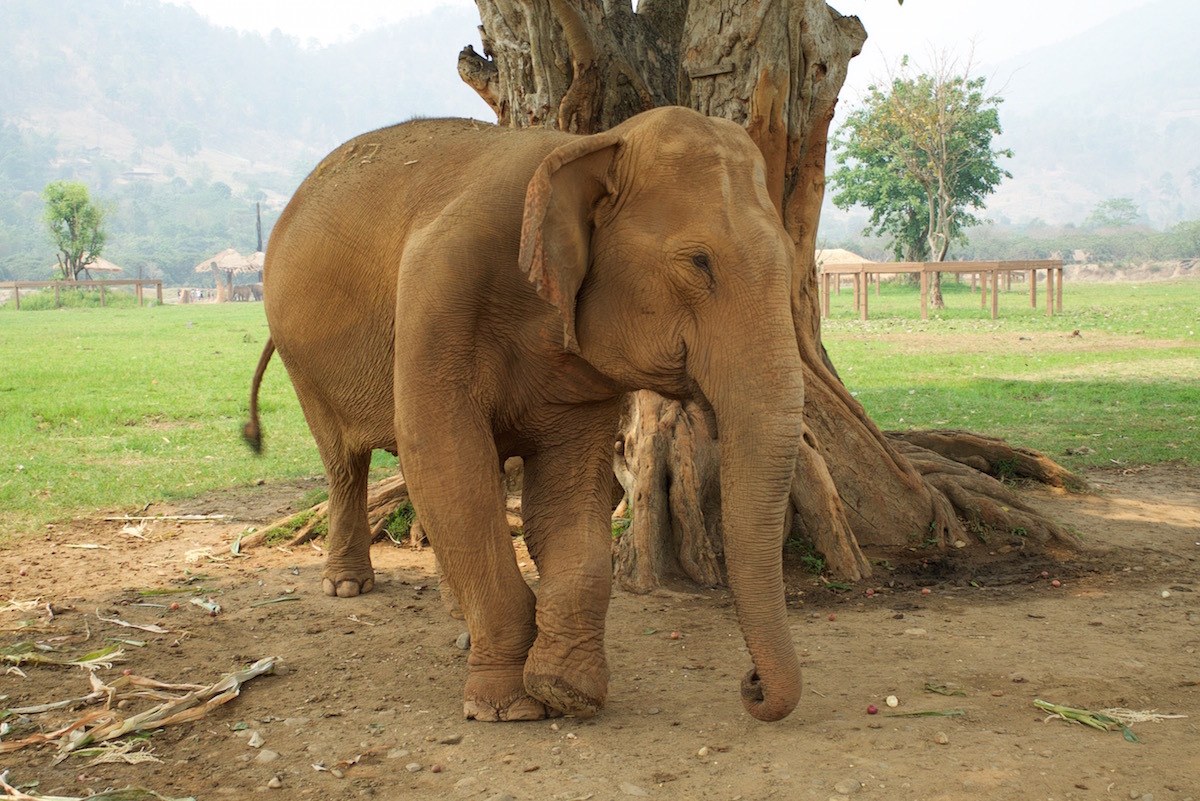
“Their life has so much suffering,” says Lek. “They are big, but to be under the human hand they must suffer. We use them like a slave.”
With Elephant Nature Park, Lek—an entrepreneur at heart, who has run everything from a laundry business to a travel agency—has pioneered a new business model. Catering to tourism’s enormous appetite for elephants, the park allows visitors to feed and bathe the sanctuary’s inhabitants in a safe, ethical environment. All proceeds from proceeds from the tourist packages—which include one-day trips, overnight stays, and week-long volunteering slots—are pumped back into the costs of running the sanctuary. “If I want to farm a rice paddy, I don’t wait for the rain. It’s the same when I want to look after the elephant,” says Lek. “I can’t wait for donations. I need to find money for the business.”
Gazing across the field, she catches sight of a sway-backed, 77-year-old elephant. Rescued two years ago, this matriarch will spend her final years ambling across the sanctuary’s parkland, untethered and without fear of violence. “She’s beautiful now,” Lek says, “I’m proud of her.”
